For more than a decade now, Justin Bieber has been the king of pop music, continually reinventing his appearance and demeanor. At first, he was a teen idol with radio-friendly, sing-along hits.
Next, he became a household name. But slowly, Justin Bieber's sound gradually shifted towards a more experimental and mature kind of direction. His evolution from bubblegum pop to venturing into R&B, EDM, and even folk has enabled him to remain current in the industry as well as demonstrate his versatility.
This not only shows his maturity but also the fact that he has learned how to ride the changing waves of the music scene. In this exploration, we'll take a closer look at how pop music has consistently been at the core of his career, guiding his transformation while pushing the boundaries of what contemporary pop can sound like.
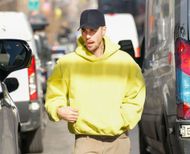
Justin Bieber's rags-to-riches tale of transition from small-town Canadian child to global music sensation is proof of his outstanding ability and intense motivation. He not only broke onto the music scene, but he also went against all fame's rules and gained the world over by being a sweet boy, a handsome and gifted singer with an unbeatable style.
In the process, there have also been stumbles in his career, from public embarrassments to self-transformations, but these have only added richness to his tale. Justin Bieber's willingness to take on trouble square on and remake himself, not just as an artist but as a person too, has been the secret to his enduring success.
It is a tale of change, of accepting that change is life, learning from the loss of it, and being a better person for it. Throughout, Justin Bieber has been an icon of resilience, ever-evolving and committed to his art as he reconnected with fans on a personal level.
The rise of Justin Bieber
In 2007, Stratford, Ontario, teenager Justin Bieber, at the age of 13, inadvertently began a pop revolution when he started uploading song covers on YouTube. Justin Bieber's low-key but genuine cover of Ne-Yo's So Sick among other hits, caught talent manager Scooter Braun's eye, who felt the spark of something enormous. It was not long before Usher recognized Justin Bieber's potential, and this led him to sign with RBMG Records in a career-altering move.
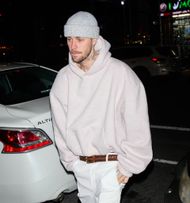
The meteoric arrival of One Time in 2009 was just the beginning for Justin Bieber, whose song left its mark on the charts indelibly. But it was the inescapable charm of Justin Bieber and the songs that would be an icon of an age that etched him into pop history.
Teen pop was always a teen hit, but Justin Bieber, with his energetic zeal and hit singles, was the poster child. Hits such as Baby and One Time were the height of teen romance and heartbreak, in effect talking to teens everywhere. His initial music was fresh, authentic, and irretrievably infectious, overnight making him a pop music legend, burying the name Justin Bieber irretrievably in the teen pop culture rhythm.
Justin Bieber's musical journey
Justin Bieber's early discography allowed him to explode onto the stratosphere, beginning with his debut single One Time back in 2009, a bubbly pop tune that rose to the top of the charts rapidly as he was still wrapping up his first attempt. That initial EP, My World, dropped in stores last November of 2009 and set a record by releasing a string of hit singles well ahead of an album's release.
One Less Lonely Girl, Love Me, and Favorite Girl all appeared on popularity charts among teenagers and proved Justin Bieber was capable of creating emotionally satisfying, hook-driven songs. Commercial success of the EP was unprecedented, with Justin Bieber becoming the first solo male artist to have four singles on the top 40 of the Billboard Hot 100 before album release.
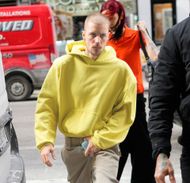
My World, however, was soon replaced by its own 2010 follow-up, My World 2.0, whose Baby was its ticket to the world, a success that went on to establish the early 2010s pop and establish him firmly in musical place. The success of those first endeavors did more than turn Justin Bieber into a teenage phenomenon; it turned him into an authentic pop sensation, merging teen adrenaline with chart-topping hooks.
With several platinum albums and an unyielding hold on worldwide charts, these albums and singles set the groundwork for a discography that would grow and mature in the future.
With the record-breaking success of My World and My World 2.0, Justin Bieber repeated it with a series of new releases of music that reflected his increasing versatility as an artist. The worldwide popularity of Baby with Ludacris in 2010 broke the pop music mold, topping top charts worldwide and garnering record-breaking hits on YouTube.

Songs like U Smile, Never Let You Go, and Somebody to Love cemented his capacity to blend retro teen pop with R&B undertones, but retain his growing vocal range. The singles placed My World 2.0 on top of charts in all nations and made Justin Bieber a global pop sensation.
Following this, he made things a little more efficient with My Worlds Acoustic, an album in which he re-did some of his previous favorites in acoustic, unplugged form, showing a bit of the hidden voice that had been submerged under the gloss of the studio. Justin Bieber's Never Say Never- The Remixes appeared at the start of 2011, along with his 3D concert film.
The album included guest verses from Miley Cyrus, Chris Brown, and Kanye West, a decidedly melodramatic exploration of the outside musical world. It was during the same year that he dropped a seasonal release with Under the Mistletoe, his Christmas album, which not only reached No. 1 on the Billboard 200 but also generated winter staples like Mistletoe and a duet version of All I Want for Christmas Is You featuring Mariah Carey.
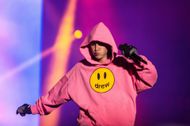
All of his records he released during this time were a fresh start from Justin Bieber's adolescence, his ability to flow in and out of pop, R&B, and Christmas covers while navigating adulthood on the world stage. Justin Bieber's musical transformation went into high gear in 2012 when he returned to sell his third studio album, Believe, which was far beyond his teen pop roots previously being produced.
The dance-pop, R&B, and electronic dance beats of the album were indicative of Justin Bieber's desire to experiment with his hand at music. The lead single, Boyfriend, was a box office single at number two on the Billboard Hot 100 and a record-breaking digital single. They were Justin Bieber's debut number one single on the Canadian Hot 100 and made him another up-and-coming star.
As Justin Bieber expanded his palette of sound, follow-up singles As Long As You Love Me with Big Sean, and Beauty and a Beat featuring Nicki Minaj, both added to the eclecticism of the record and both contained pop and urban elements. Believe was a Billboard 200 number-one album and solidified him as a global pop sensation. After Believe, Justin Bieber further pushed the limit of his musicality in 2013 through Believe Acoustic.
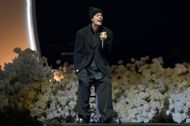
The mini sequel to Believe offered a gentler, sweeter side of the artist, and was accompanied by the ballad-like lead single Pray. The number-one entry of the album on the Billboard 200 left Justin Bieber the youngest artist with five number-one albums at age 19.
The singles, from sensual Heartbreaker to Confident, one of the more lively ones, with Chance the Rapper, foreshadowed his new direction. The songs would then be compiled and released together as Journals, an independent release, which documented Justin Bieber's more mature, reflective lyrical work.
With these albums and endeavors, Justin Bieber's musical terrain became clear, as he evolved from hyper-teen heartthrob to eclectically pop and R&B artist. Justin Bieber fearlessly came back from pop music's mainstream early in 2015 with electronic duo Jack Ü on Where Are Ü Now.
The song launched his career as it was the reboot of an adult sound and an introduction to the new generation. It rapidly ascended to the chart-topper position, to number eight on the Billboard Hot 100 and number one on the Hot Dance/Electronic Songs chart.
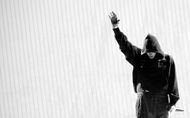
The track earned Justin Bieber his very first Grammy as well, confirming him in the dance and electronic category. Justin Bieber unveiled What Do You Mean? Later in the year as a lead single off his fourth album, Purpose. The record was teen pop, electronic dance music, and acoustic R&B, and the song secured for him his initial US number-one single.
That followed Sorry, which also went to number one, a first since Justin Bieber was the first male artist in nearly a decade to have three number-one hits on one album.
Purpose, released in November of 2015, unleashed adult multicultural Justin Bieber with Love Yourself and Company acoustic, R&B, and pop-tuning. The album went into the Billboard 200 at the beginning of its release and solidified Bieber as the largest pop phenomenon of the time.
The Purpose World Tour began in 2016 and also solidified his worldwide popularity, and his top-one 2016 chart hit was his very first of its kind since his singles occupied three highest positions in the UK Singles Chart for the first time ever in history. With Purpose, Bieber not only proved that he had matured as an artist but cemented his record-breaking and rule-defying value as a pop sensation.
Justin Bieber cemented his global fame in 2017 with a run of hit singles and collaboration singles. Highlights were the effort on the remix version of Despacito, which is a song where he collaborated with Luis Fonsi and Daddy Yankee.
This was Bieber's first foray into singing Spanish, a record-breaking success, which was tapped, topping the Billboard Hot 100 and setting several records, among them was a 56-week run at number one on the Hot Latin Songs chart.
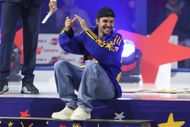
The song was fueled by its record-breaking success on the streaming website, most most-streamed song ever on Genius. Great. Bieber's work in the Latin music field gained him his first Latin Grammy Award to further expanding his own music.
His work with DJ Khaled on I'm the One in April 2017 also gained him a number-one single to further add to his repertoire, and Despacito was record-breaking with giving Bieber two straight chart-topping singles.
This was preceded by collaborating with BloodPop on Friends towards the end of the year, where he pushed the pop sound even further since the song was a summer hit. He also showed how he could cover gaps when he collaborated again with DJ Khaled and Chance the Rapper on No Brainer in 2018, which topped the hip-hop and R&B charts.
He also ensured he was in the best shape for his featuring on Ed Sheeran's I Don't Care in 2019, when the song topped the charts in most countries. His featuring on Dan + Shay's 10,000 Hours was his continued exploration of country music because he had just won his second Grammy Award.
Bieber's crossover and chart-topper status were also due to topping various different music charts on a regular basis, making him among the most consistent and versatile artist of his time.

Justin transitioned his music genre in 2020 with the release of his fifth studio album, Changes, which topped the US and UK Billboard 200. The title track Yummy broke the ice of his new genre with smoother and cleaner R&B-sounding music and reached the peak of the charts.
Then, following that, Bieber dropped Intentions, with Quavo, which peaked at number five on the Billboard Hot 100. He kept the musical heat going with Stuck with U, an emotional duet with Ariana Grande that went to number one, a pandemic hit, and one that also gave proceeds to COVID-19 relief. Later months saw Bieber surprise fans with a drop of Holy featuring Chance the Rapper, back to religiously inspired lyrics.
The song received universal acclaim in its critique and peaked at number three. Bieber's voice was once again highlighted through his involvement in Lonely with Benny Blanco, which employed more reflective emotional material, and Monster, featuring Shawn Mendes, a track that brought the two giants together in shared experience. Bieber broke his record in 2021 with Justice, his sixth album.

The lead single from the album, Peaches, went global, reaching atop the Hot 100 chart, as did Justice garner its critical approval and place Bieber in the largest global pop phenomenon in the world.
The album was followed by the surprise drop of Freedom, which is an EP with a touch of gospel, and a line of collaborations, such as Stay featuring Kid LAROI, that reached the charts and became global streaming phenomenon hits.
Meanwhile, as his own career grew and evolved, Bieber went on to make history in his own right by breaking records right away with an intuitive blend of pop, R&B, and gospel.
Justin Bieber's latest body of work demonstrates an artist fully invested in change, both personal and creative. Albums such as Changes and Justice do not merely reflect a sonic turn toward R&B and soul; they represent a shift in the way Bieber positions his identity, employing love, faith, and healing as mainstays. No longer running from chart-topping singles alone, his music now has a sense of purpose, that of a man finding his way through fame with humility and grace.
Outside the recording studio, Bieber has taken to his public stage with a newfound sense of purpose, openly discussing mental health and weighing in on causes that have little to do with celebrity. Whether through quiet interviews, transparent songwriting, or significant collaborations, he keeps pushing forward, not only as a performer but as a man developing in the moment before everyone's eyes.
Keep reading SoapCentral for more informative content!
Also Read: Top 8 Sabrina Carpenter tracks you can’t miss
